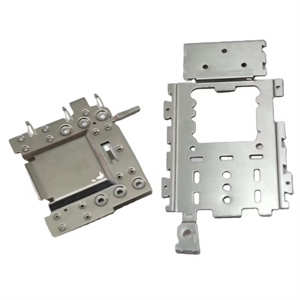There are significant differences between high-precision stamping and ordinary stamping in multiple aspects. The following is a detailed comparison of the main differences between them:
Accuracy and quality requirements:
High precision stamping: It requires extremely high precision and quality, and can achieve machining accuracy at the micrometer level. It is usually used to manufacture components that require high precision and quality, especially in key fields such as automobiles and aerospace.
Ordinary stamping: Although it also pursues a certain level of accuracy and quality, its requirements are relatively low. Ordinary stamping is more suitable for general industrial applications and scenarios with less strict precision requirements.
Process flow and equipment:
High precision stamping: Usually using more complex process flow, involving high-precision molds and advanced stamping equipment. In the production process, optical measurement or CNC machine tools are also needed to ensure the high precision of the product.
Ordinary stamping: The process is relatively simple and the equipment requirements are also relatively low. Ordinary stamping machines can usually meet the needs of general industrial production.
Material utilization rate:
High precision stamping: Due to its high-precision characteristics, it can more effectively utilize materials, reduce waste and raw material waste.
Ordinary stamping: may be slightly inferior to high-precision stamping in terms of material utilization, but it can also meet the needs of general industrial production.
Applicability and flexibility:
High precision stamping: Due to its strict requirements for precision and quality, it is mainly suitable for specific industries with extremely high precision requirements. The replacement and adjustment of molds may be relatively complex, so there may be limitations in terms of flexibility.
Ordinary stamping: The mold replacement is relatively easy and can adapt to the processing needs of different components, so it has advantages in production flexibility and scalability.
Cost:
High precision stamping: Due to the complexity of equipment and processes, its initial investment and production costs may be relatively high. However, in the long run, the increase in material utilization and the decrease in scrap rate may help reduce overall costs.
Ordinary stamping: The equipment and process are relatively simple, so the initial investment and production cost may be lower. However, it should be noted that lower accuracy and quality may lead to an increase in subsequent processing and maintenance costs.
